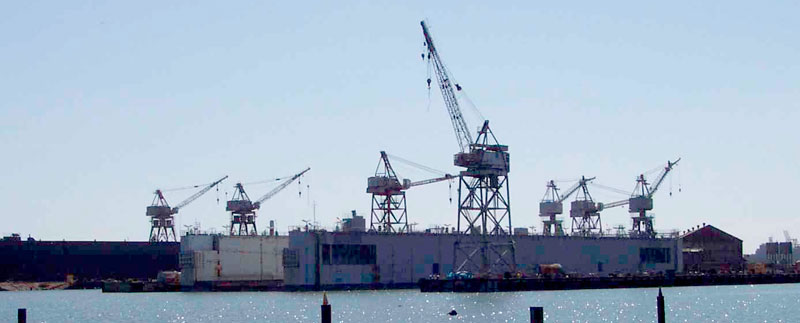
All ships must be brought out of the water periodically for maintenance, painting, and repair. Floating dry docks are large, box-like vessels designed for this purpose. They can be submerged or floated by filling or emptying water tanks on their sides and bottoms. Ships are gently moved in by tug boats while supports are carefully positioned beneath the hull by divers. The water is then removed from the tanks and the whole dry dock floats, lifting the ship out of the water.

Cranes on tracks can move along the sides of the dry dock to lift equipment off of or on to the ship being repaired.
BAE Systems San Francisco Shipyard currently operates two floating dry docks at Pier 70:
This is the largest working dry dock on the west coast, capable of lifting mammoth cruise ships out of the water. It is about 900 feet long and was built in the 1960s. It was modified in recent years to accommodate larger ships.
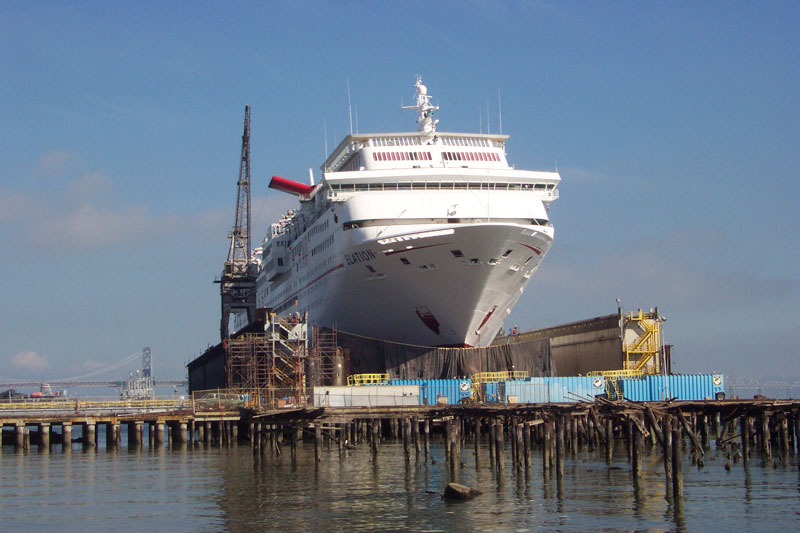
Large cruise ship in Dry Dock #2.
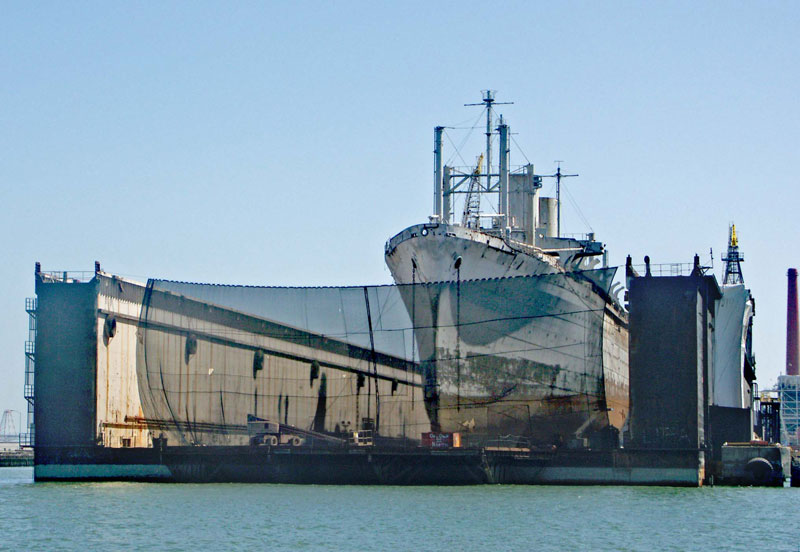
Screen in place on Dry Dock #2 to contain chipped paint, rust, and other debris.
The smaller dry dock on Pier 70 is 528 feet long and 70-80 feet wide. It was built in the 1940s and brought to Pier 70 in the 1990s.
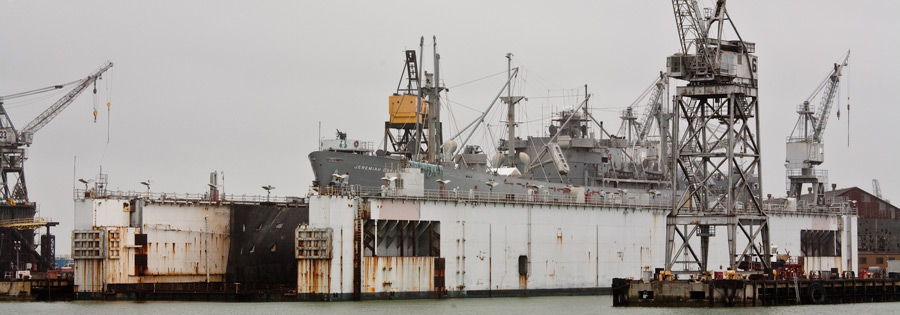
Historic Liberty Ship Jeremiah O'Brien in Eureka Dry Dock, 2009
A third dry dock, Dry Dock Number 1, dating from the 1940s, was obsolete and for sale when it broke free in a storm in the winter of 2002 and floated to Treasure Island. It had to be salvaged and is currently being scrapped.

Dry Dock #1, after recovery from its "escape" in 2002. It is currently being scrapped.
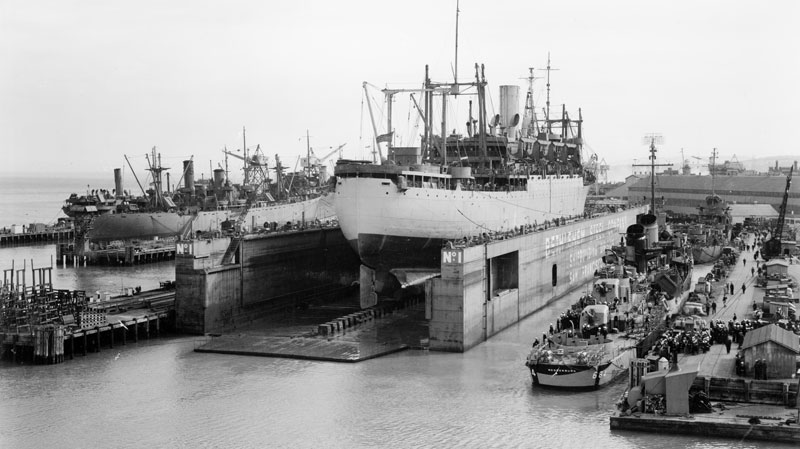
Dry Dock #1 was heavily used during World War II.